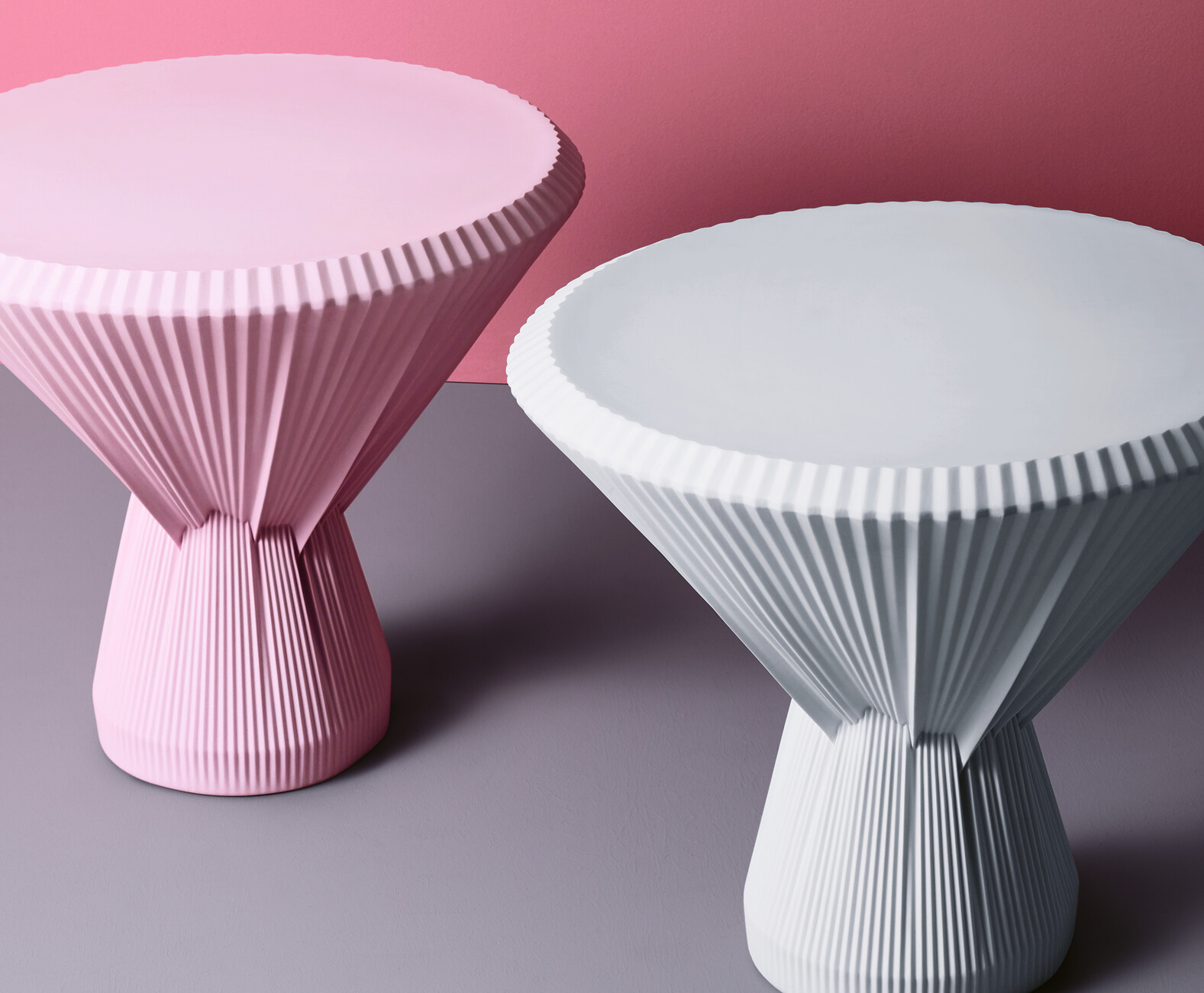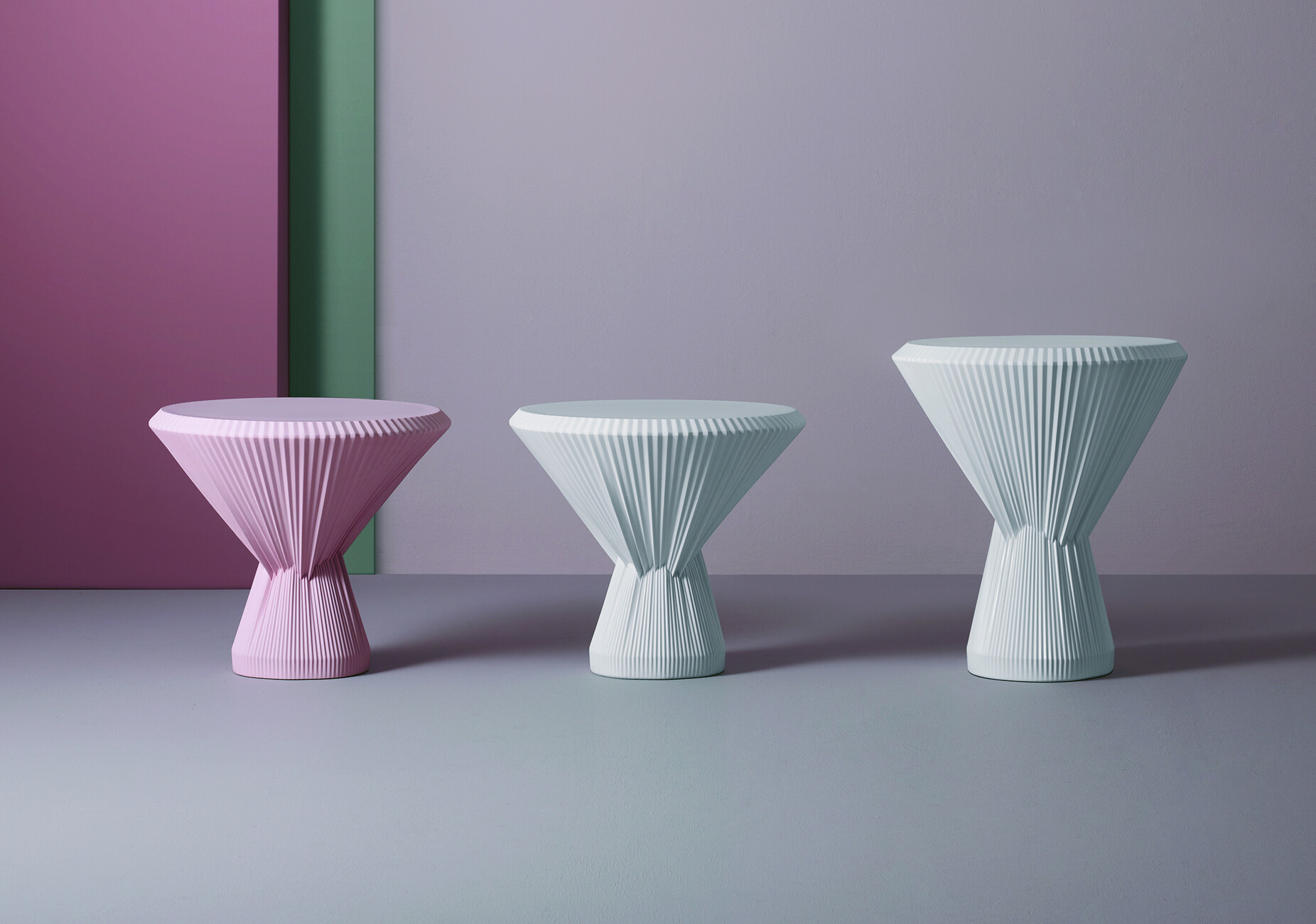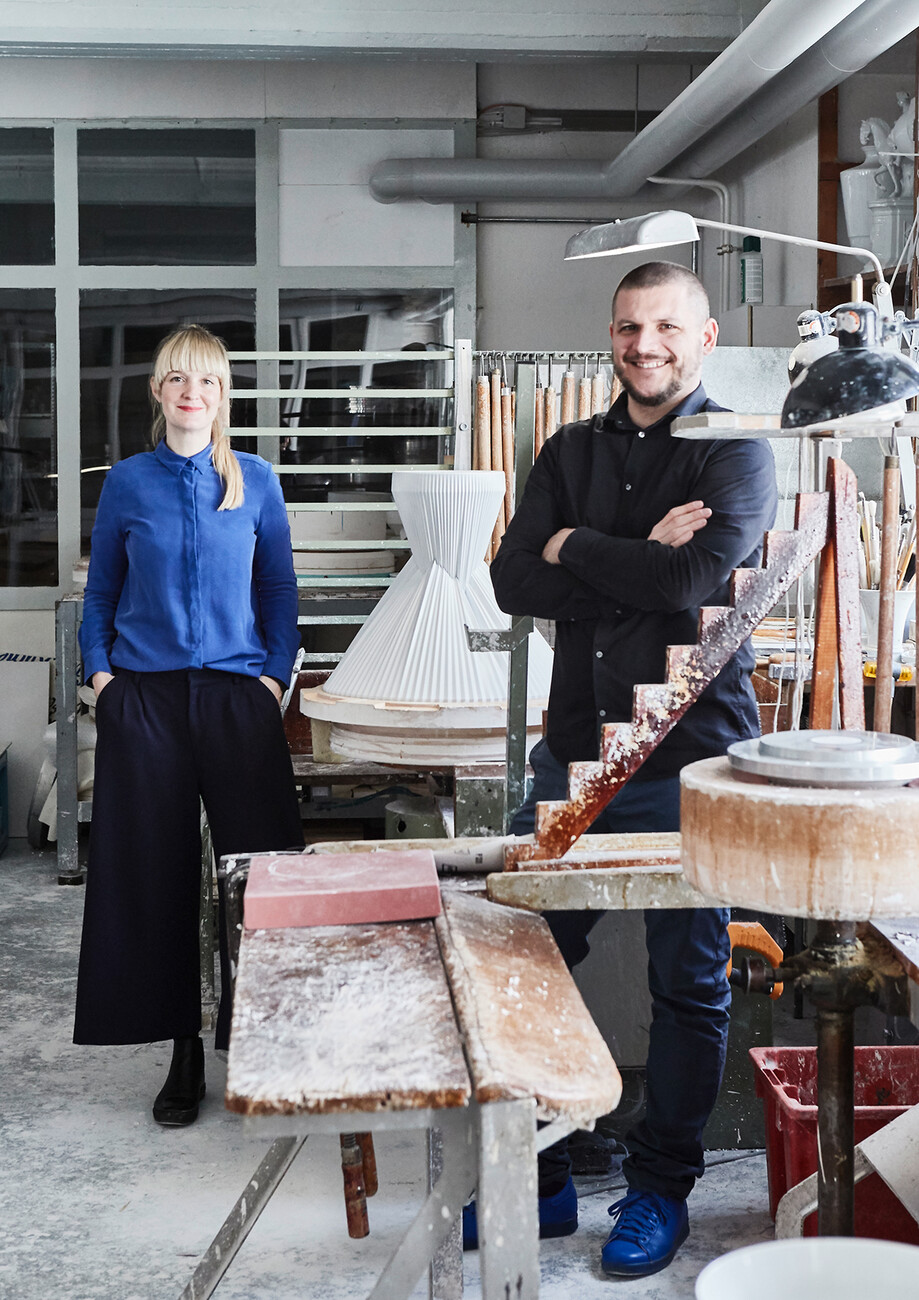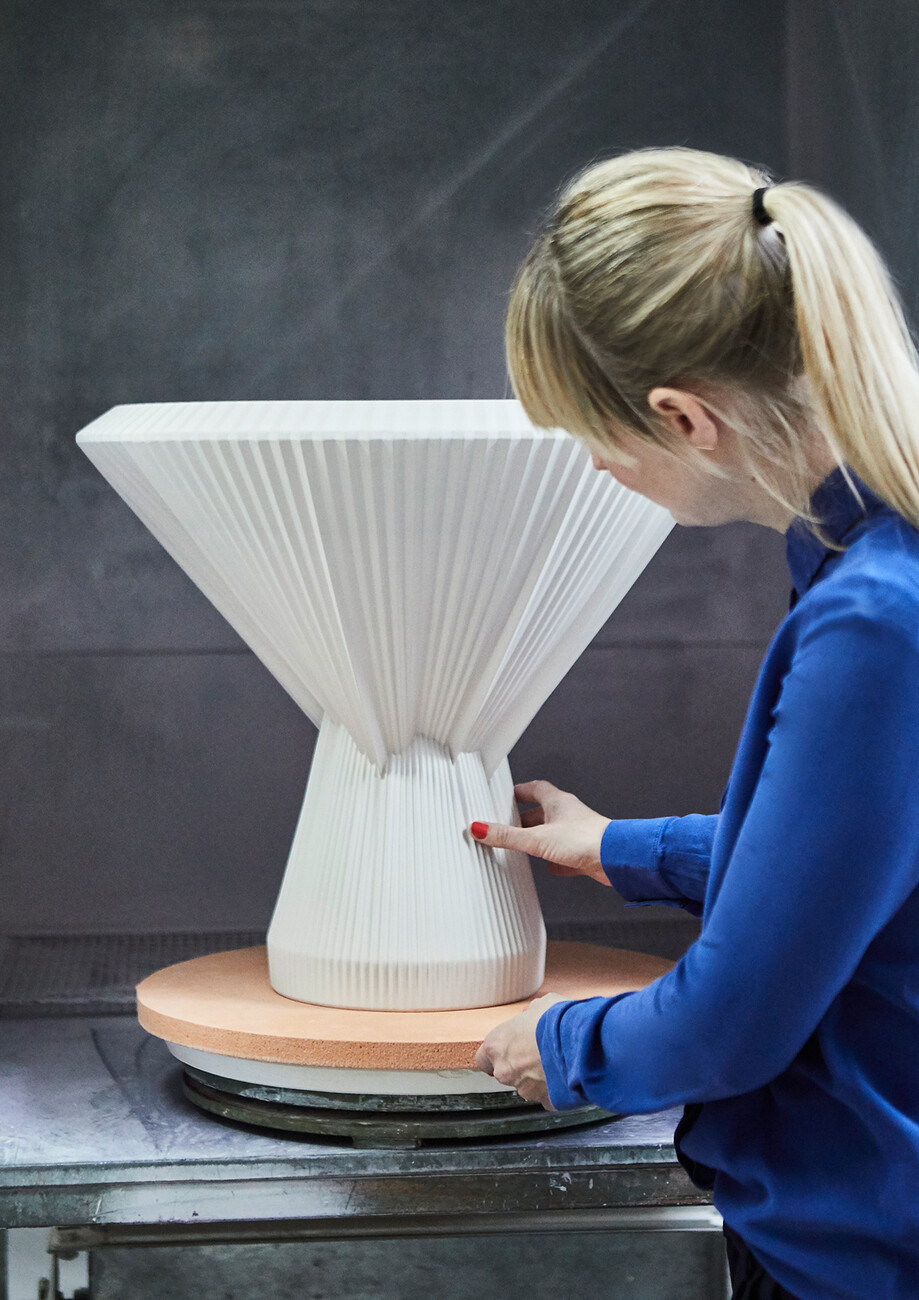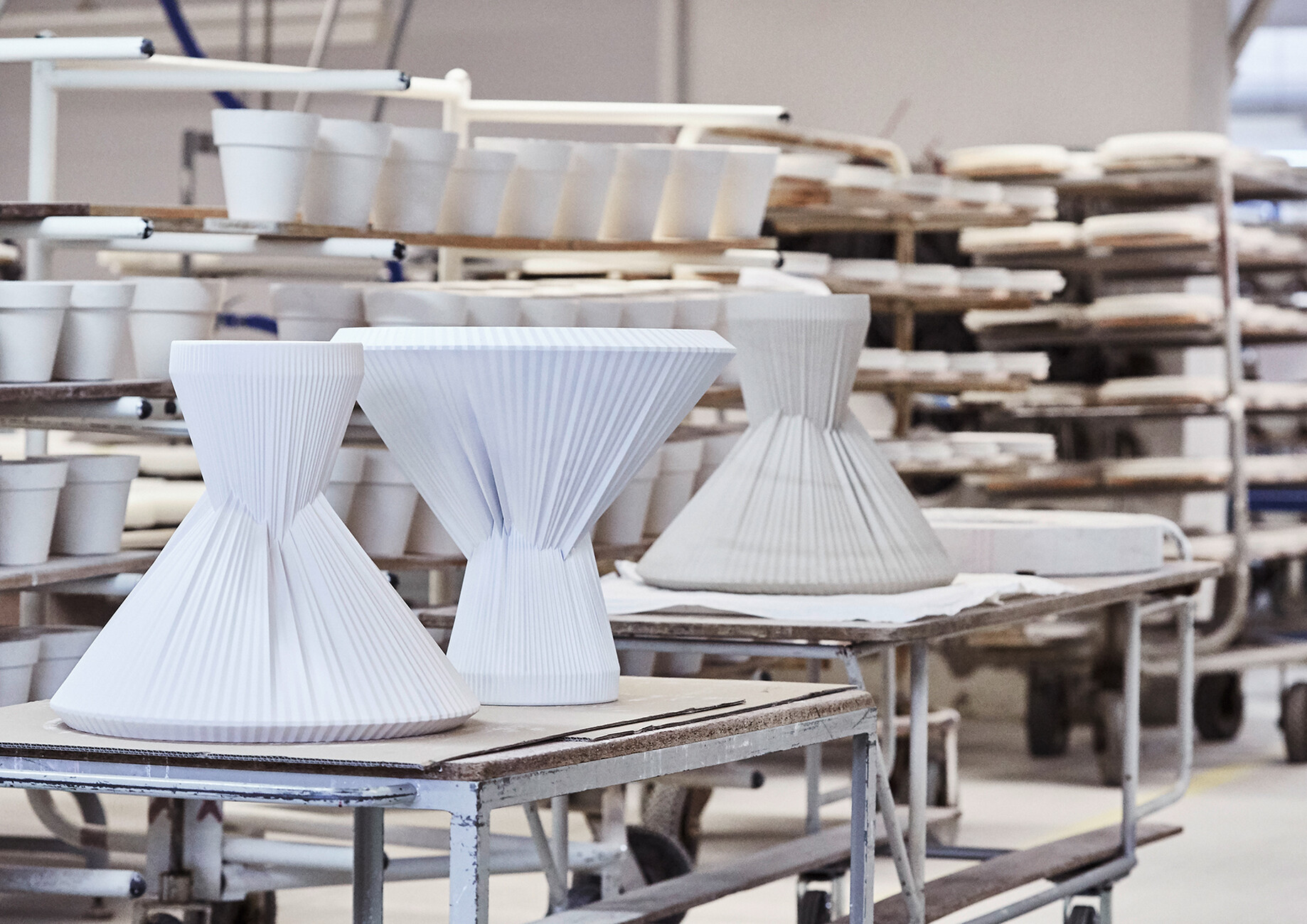The high art of the arrangement of folds
It is in many ways an extraordinary experiment that Fürstenberg and Studio Besau-Marguerre have embarked on with this porcelain object. When the long-standing company with the crowned F in its signet commissioned the Hamburg-based duo with an exclusive design, the latter did not come up with decorative figurines or tableware. The new product, dubbed “Plisago” is a side table – or rather, a completely new take on the concept: Two interlocking conical cylinders and a pleated, matt glazed surface with a diamond-cut table-top characterize the small item of furniture. However, what is special about the piece is not just the material, but also the design technique employed: “We generated the side table using a generative software for a CAD program that we developed especially for the project,” Marcel Besau relates. The result is an interplay between parameters, algorithms and chance – resulting in a deliberate asymmetry, and a structure between textile and fragile.
“The biscuit, that is to say the raw material, is identical to all of the other products from the house of Fürstenberg,” Eva Marguerre explains. The challenge the production of the table posed on the other hand was unique. The design duo brought the manufactory to the limits of its capacity with the dimensions of the table alone: “We fully exploited the size of the oven,” the designers report. Furthermore, the table had to be kilned upside down, as the mass of the table surface would have sagged in the oven otherwise. “If nothing else, the shape and the pleats have a supportive effect.”
“Plisago” is available in two different heights and as a miniature version, in classical white or delicate rosé. The piece will shortly be awarded the German Design Award 2019 in Gold in the Furniture category. (mh)
